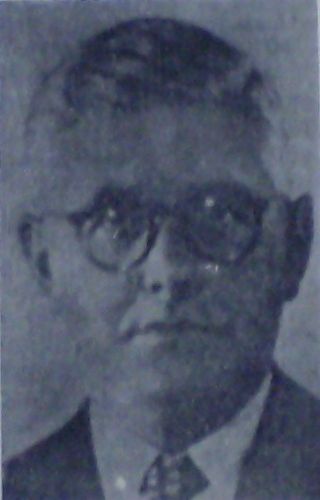Related Research Articles

The Torcuato Di Tella University is a non-profit private university founded in 1991. Located Buenos Aires, Argentina, it is focused primarily on social sciences.

SIAM is an Argentine home appliance brand, currently owned by "Grupo Industrial Newsan", a leader of the segment in the region. The original "Siam Di Tella" company was founded in Buenos Aires by Torcuato di Tella in 1911, established as a manufacturer of mechanical bread machines. Subsequently, production was diversified by incorporating the production of refrigerators, washing machines, kitchens, televisions, scooters, vans, automobiles, and elements for private industry and the public sector, such as oil pumping equipment, large electrical transformers, steel pipes and generators for diesel-electric locomotives. By the 1940s, the company became the largest metalworking industry in South America.

Ana María Stekelman is one of Argentina’s leading choreographers and is the founder of the Tangokinesis dance troupe.
María Esther Álvarez de Hermitte (1921-1990), commonly known as Esther Hermitte, was a social anthropologist from Argentina.
Florencio Ruck Pozadas Cordero (1939-1968) was a percussionist and composer pioneer of the electroacoustic music, and post serial composition techniques in Bolivia.

Torcuato di Tella was an Argentine industrialist and philanthropist.

Guido di Tella was an Argentine businessman, academic and diplomat who served as Minister of Foreign Affairs.

Marta Minujín is an Argentine conceptual and performance artist.
The Torcuato di Tella Institute is a non-profit foundation organized for the promotion of Argentine culture.

Roberto Aizenberg, nicknamed "Bobby", was an Argentine painter and sculptor. He was considered the best-known orthodox surrealist painter in Argentina.

Jorge Aníbal Romero Brest was an influential art critic in Argentina, who helped popularize avant-garde art in his country.
Roberto Jacoby is an Argentine artist and sociologist. Known for his conceptual art and social activism in Argentine politics, most of his work is collaborative such as his displays in Experiencias and participation in Tucumán Arde.
Lea Lublin was an Argentine-French performance artist.

Delia Cancela is an Argentine pop artist and fashion designer. She has lived in Argentina, New York, London and Paris, and exhibited internationally. Retrospective exhibitions of her work and her collaborations with Pablo Mesejean include Delia Cancela 2000-Retrospectiva (2000), Pablo & Delia, The London Years 1970-1975 (2001), and Delia Cancela: una artista en la moda (2013).

Dalila Puzzovio is a Latin American visual artist and fashion designer active during the 1960s. Puzzovio works in the art forms of pop, happening, and conceptual art. Her artistic creativity is credited by Graciela Melgarejo as having paved the way for subsequent Argentine artists and greatly influenced the work they produced.
Experiencias '68 was a controversial exhibition held at Instituto Torcuato Di Tella (IDTD) in Buenos Aires, Argentina, in May 1968, curated by Jorge Romero Brest. It included artwork by artists including Oscar Bony, Delia Cancela, Roberto Plate, and Roberto Jacoby. With this exhibition, the Institute was joining a growing movement among artists to make artwork that would challenge the government under Juan Carlos Onganía.
Rubén Santantonín (1919–1969) was an Argentinian visual artist. Although he was active in the Pop art movement through his participation in Torcuato di Tella Institute, Santantonín's personal artwork was based more on conceptual and abstract idealism. His artworks tended to involve mixed media that would challenge the viewer's relationship with objects and materials.
Maria Gainza is an Argentine art critic and writer.
Susana Zimmermann (1932-2021) was an Argentine dancer and choreographer. She was a pioneering figure in contemporary dance in Argentina and had choreographed at least sixty performances staged in different countries. Zimmermann was also an educator and is noted for developing a methodology for dance instruction.

Josefina Robirosa was an Argentine artist known for her paintings, murals, and drawings. She is considered one of Argentina's most prominent women painters.
References
- ↑ Nascimento, Claudia Tatinge; Berson, Jessica (2000). "Dance for the Camera Symposium: (University of Wisconsin-Madison, 9-13 February 2000)". Dance Research Journal. 32 (1): 165–169. doi:10.1017/s014976770000588x. ISSN 0149-7677.
- 1 2 3 4 5 6 Moyano, Marcelo Isse (2006). La Danza Moderna Argentina Cuenta Su Historia: Historias De Vida. Ediciones Artes Del Sur.
- 1 2 3 Fajardo-Hill, Cecilia; Guerrero, Marcela (2017). "Latina Art Through the Exhibition Lens: Radical Women: Latin American Art, 1960-1985". Diálogo. 20 (1): 133–140. doi:10.1353/dlg.2017.0015. ISSN 2471-1039.
- 1 2 3 Fortuna, Victoria. Moving Otherwise: Dance, Violence, and Memory in Buenos Aires. Oxford University Press, 2019.